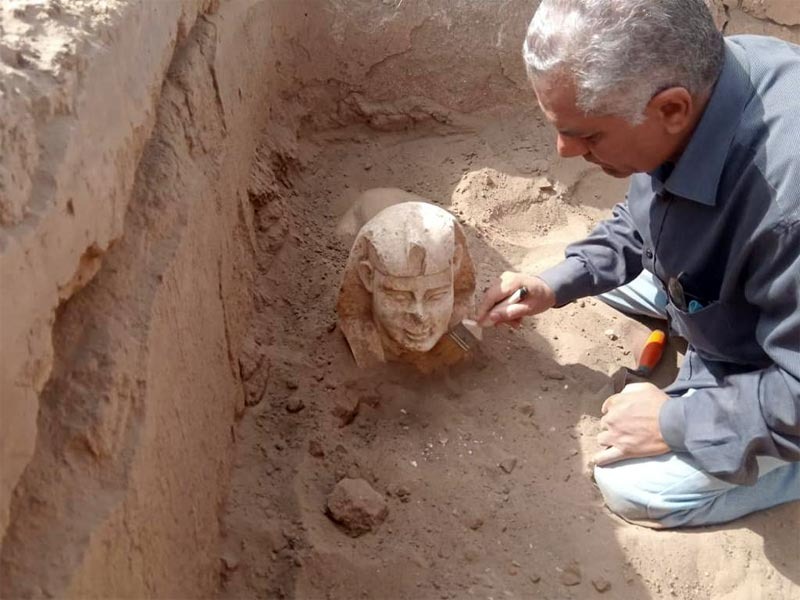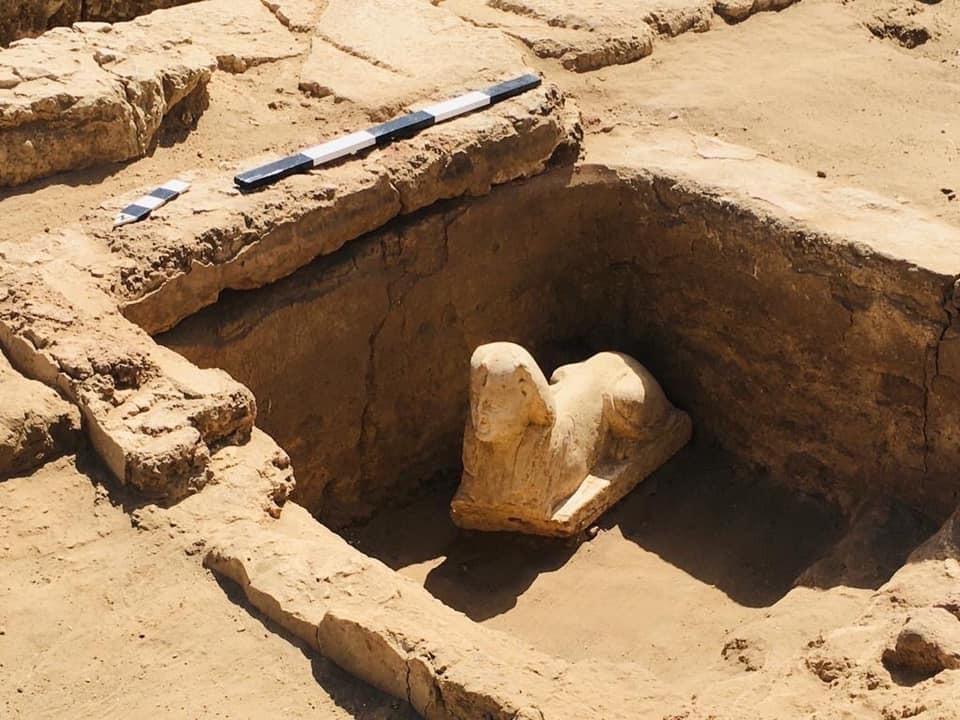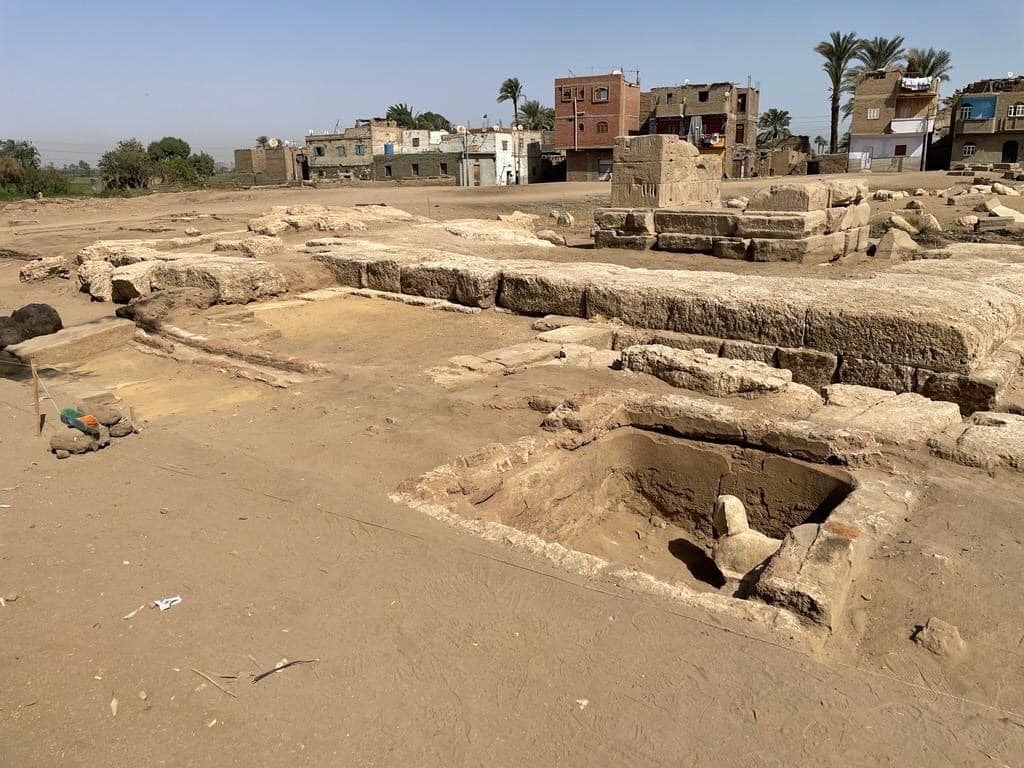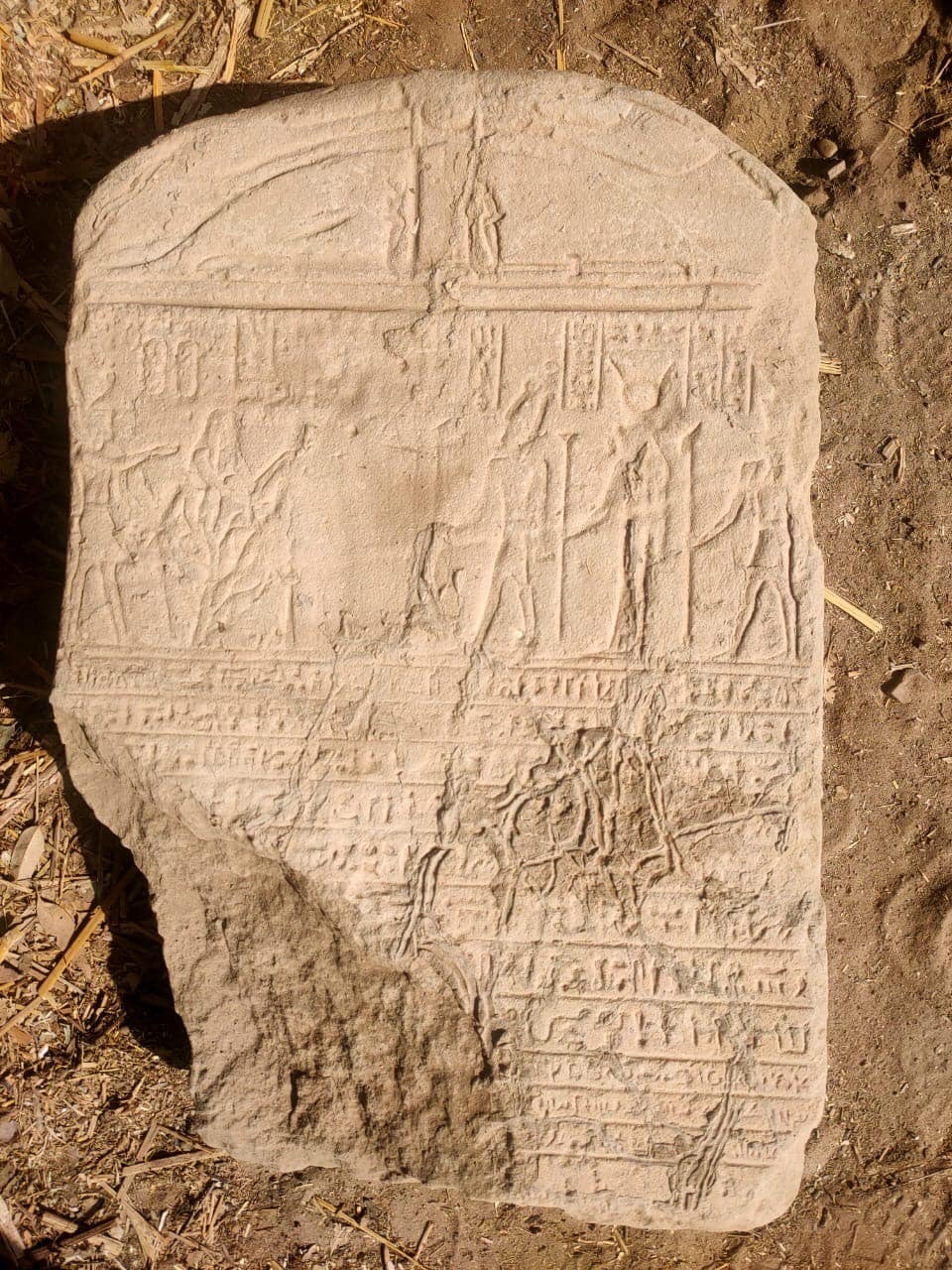The statue is a much smaller iteration of the famed Great Sphinx of Giza, but sculpted perhaps 2,500 years later.

The Roman-era mini sphinx discovered at the Dendera Temple Complex in Egypt. Photo courtesy of the Egyptian Ministry of Tourism and Antiquities.
A tiny version of one of Egypt’s most famous historic carvings is the nation’s latest—and most adorable—discovery, with archaeologists unearthing a miniature sphinx.
The diminutive Roman-era statue hails from the Dendera Temple Complex in Qena. It may represent the Roman Emperor Claudius, in power from the year 41 to 54, the Egyptian Ministry of Tourism and Antiquities announced in a statement.

A team from Cairo’s Ain Shams University—the first Egyptian-led archaeological mission at the site—found the sphinx in a two-level limestone shrine, inside a red-brick-and-mortar water basin. Beneath it lay a Roman stela inscribed with hieroglyphics and demotic script.
The statue has “royal facial features” and a “soft smile” with dimples, archaeologist Mamdouh Al-Damati, who led the excavations, told CNN.
The Roman-era mini sphinx discovered at the Dendera Temple Complex in Egypt. Photo courtesy of the Egyptian Ministry of Tourism and Antiquities.
The Roman-era mini sphinx discovered at the Dendera Temple Complex in Egypt. Photo courtesy of the Egyptian Ministry of Tourism and Antiquities.
The figure is wearing a striped cloth headdress known as a nemes, featuring a stylized, upright cobra, or uraeus, above the forehead. This traditional garb of the ancient Egyptian pharaohs was considered a symbol of royalty and divine authority.
A mythological creature with a human head on a lion’s body—and, in non-Egyptian representations, usually the wings of an eagle—a sphinx was considered a guardian figure. Ancient Greeks and Egyptians often erected statues of the fierce beast outside temples.

The inscribed stela discovered with a Roman-era mini sphinx at the Dendera Temple Complex in Egypt. Photo courtesy of the Egyptian Ministry of Tourism and Antiquities.

The famous Great Sphinx of Giza, which measures 240 feet long, was built around 2,500 B.C.E. Believed to represent the Egyptian Pharaoh Khafre, it is the nation’s oldest monumental sculpture.
The newly discovered sphinx is on the site of the Temple of Dendera, erected during the Roman era in worship of the god Horus.
The Roman-era mini sphinx discovered at the Dendera Temple Complex in Egypt. Photo courtesy of the Egyptian Ministry of Tourism and Antiquities.
The Roman-era mini sphinx discovered at the Dendera Temple Complex in Egypt. Photo courtesy of the Egyptian Ministry of Tourism and Antiquities.
The dig, which is still ongoing, began in February, with assistance from the National Institute for Astronomical and Geophysical Research, reported ARTnews.
Excavation work has also included a magnetic scan and radar scan of the area surrounding the temple in front of the Isis Gate, with plans to continue the dig on the road connecting the Temple of Dendera and the Temple of Horus.

Leave a Reply